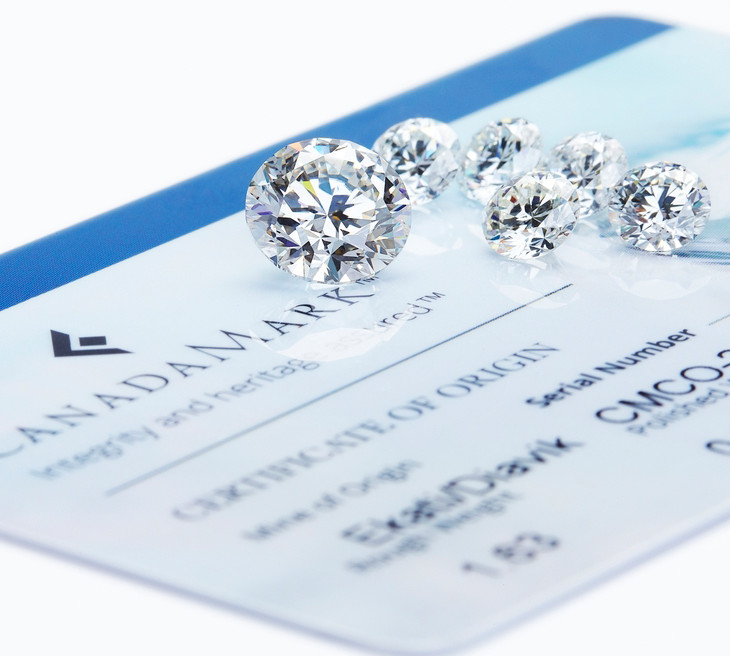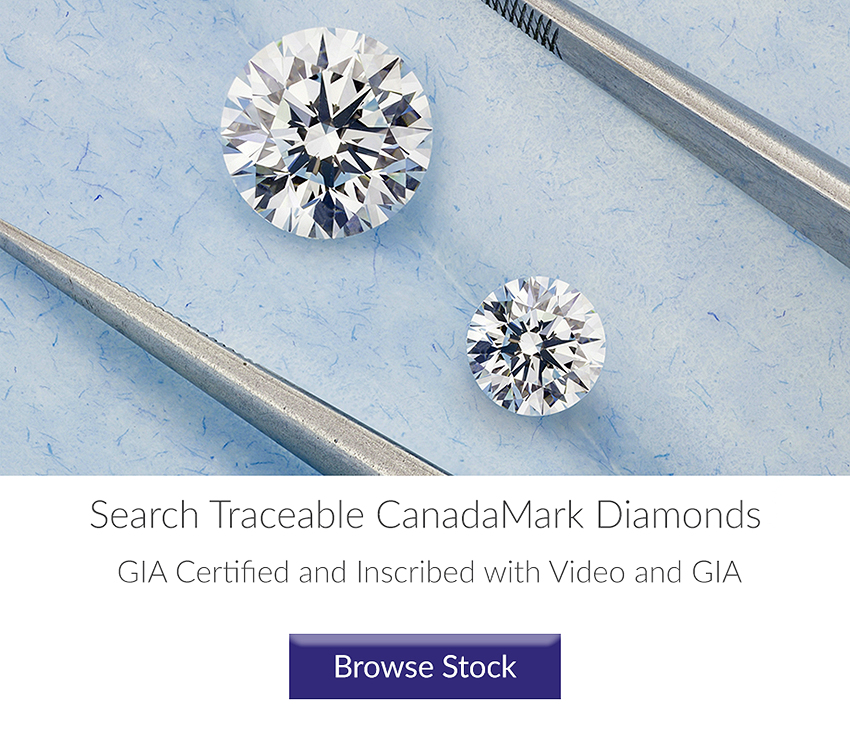Buying an ethically sourced diamond
Today, many of our buyers want to know where their diamonds originate. Few jewellers disclose the origin of their diamonds. Interestingly, most jewellers do not actually know where their diamonds originate. Today, a new ethically conscious consumer looks deeper into the supply chain. This is especially relevant where so much controversy caused media attention through the subject of Blood Diamonds.
It is a fact that the majority of diamonds come through a very complicated supply chain with a paper trail from one trusted supplier to another. There are few systems in place giving the end buyer information about the Mine of origin. For this reason, we decided to make CanadaMark diamonds available to our buyers (trade and private)
Contact us to purchase any of the diamonds listed. Our list is updated weekly based on available diamonds CanadaMarked and GIA certified.
New demands from millennials buying diamonds
A growing number of buyers now look deeper into the supply chain. Many millenials seek additional assurances. As a result, we spend a great deal of time sourcing traceable diamonds. Furthermore, our fully traceable diamonds come with the assurance of 100% ethical standards.

What is Provenance for diamonds
Provenance refers to the origin of a diamond. The word Provenance comes from the French word provenir. The word means “to come from” and relates to the origin and journey of a rough diamond. From the mine, through the cutting process to the polished diamond presented to the consumer. In short, there is a growing demand for information on the origin of the raw materials and their journey from the mine to the finished item.
Stopping the flow of ‘Blood’ Diamonds and ‘Dirty’ Gold
Diamonds and precious metals have come under intense scrutiny over the years. The Media draws public attention to ‘Blood’ Diamonds (see Conflict Diamonds) and ‘Dirty’ Gold. It is unacceptable to create jewellery made from materials involved in harming workers within the supply chain. For this reason, we have adopted responsible sourcing wherever possible.
Fairtrade Gold and the system for tracing luxury raw materials
Incredible progress has been made for creating channels of traceability with the introduction of Fairtrade Gold. Fairtrade Gold offers provides a fully audited system recording the movement of mined gold. Fairtrade Gold helps small mining communities. Fairtrade works towards safe working conditions for miners. In addition, reducing the harmful effect of chemicals on the environment. Also, fair payment for gold produced by Artisanal miners. Since most gem diamonds come from large scale mining operation, it is difficult to apply the same system. Artisanal diamond mining contributes to a very small fraction of the World’s gem quality diamonds.
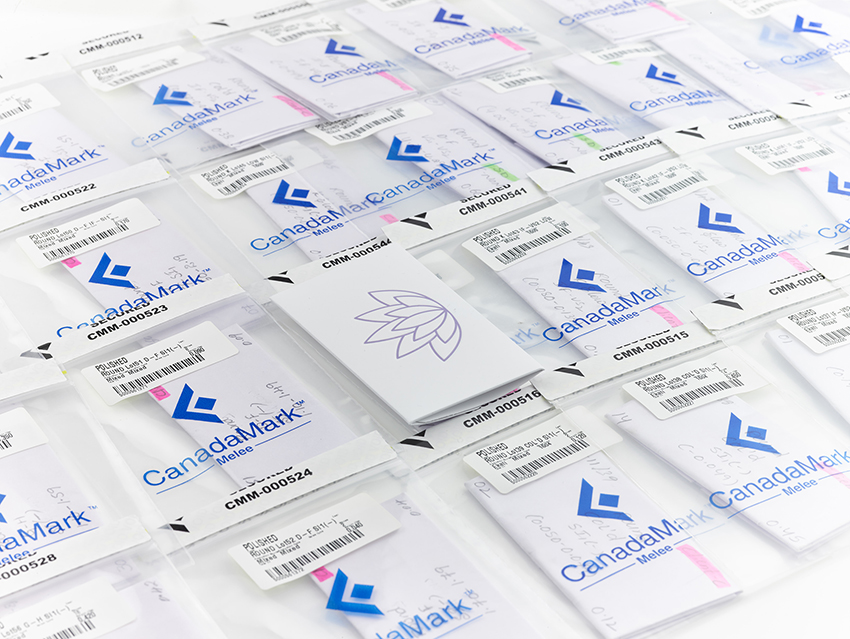
CanadaMark small melee diamonds available from Serendipity Diamonds
Where do Traceable Diamonds come from?
A small proportion of the World’s diamonds can be traced back to their original mine. Traceable, trustworthy systems include Dominion Diamond Corporation’s CanadaMark brand and the DeBeers Forevermark brand. Although, DeBeers does not guarantee origin. Instead, it is the Aggregate that is guaranteed to be mined ethically. CanadaMark diamonds include a unique traceable identification number etched onto the diamond. The CanadaMark diamonds we supply, include a laser-inscribed CanadaMark serial number. This verifies the mine of origin, rough diamond weight from which it was cut and the final carat weight.
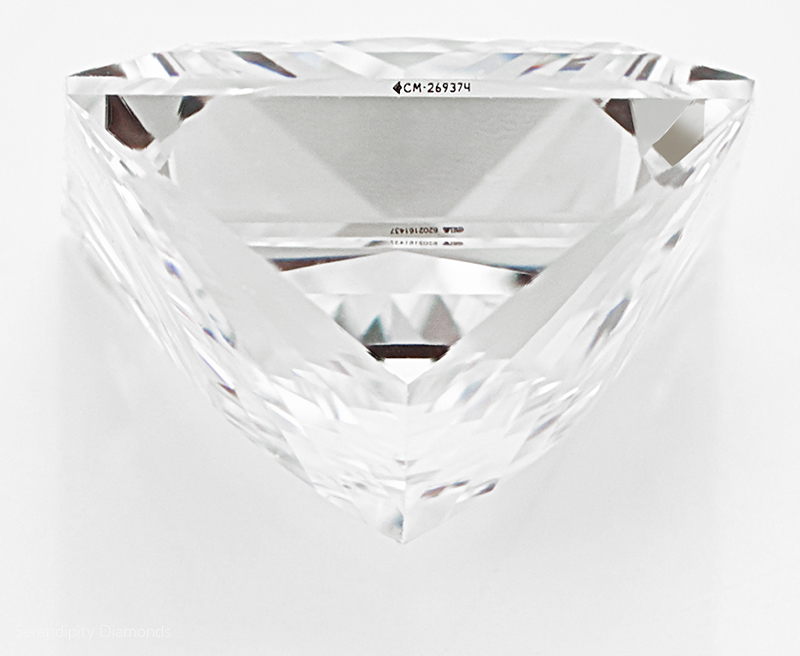
This photograph shows the laser inscribed CanadaMark number on the side of a GIA certified diamond. (Photograph copyright Serendipity Diamonds)
Conflict-Free Diamonds
CanadaMark diamonds are 100% conflict free. They originate from Canada’s Northwest Territories mined from the Ekati and Diavik Mines. With an ethical origin and full traceability, buyers have the reassurance of ethical standards. Imagine that you could present a diamond engagement ring to your partner, knowing exactly where the diamond came out of the ground. Many of our retail clients see a great benefit of passing along this additional value with a fully certified diamond.
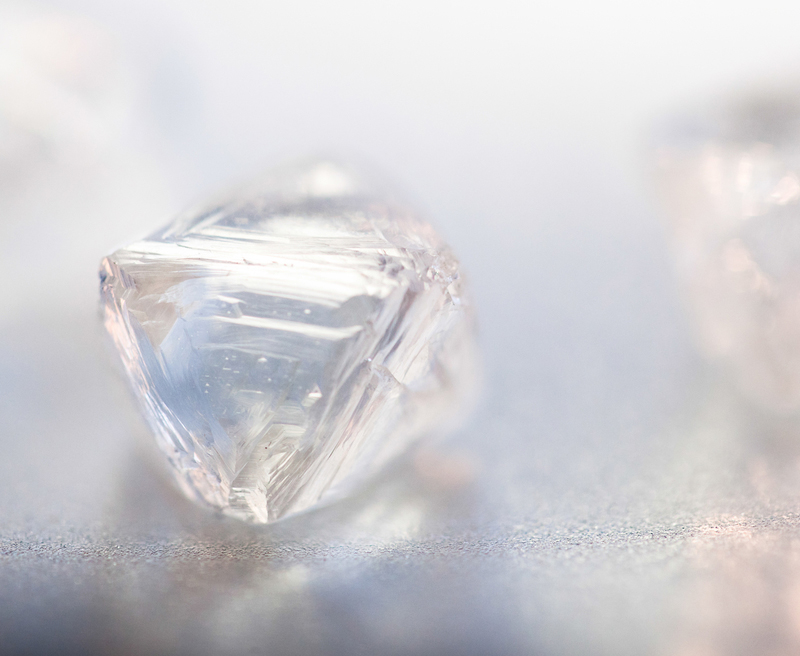
Rough diamonds, of exceptionally high colour, clarity and lustre from Canada’s Ekati and Diavik Mines
Certification for Traceable Diamonds
Most CanadaMark diamonds include GIA certification. This does, however, have no real concern with an origin, despite being part of the diamond’s journey. We favour certification from the Gemological Institute of America for our CanadaMark diamonds, which can be viewed by subscribing to our weekly updated list.
Going further than just ‘conflict free’ diamonds
Traceability is an important issue with diamonds. Traceable diamonds offer the consumer rock-solid assurances of a Conflict-Free status for diamonds. But this does not help small scale, artisanal diamond miners.
Most jewellers sell diamonds with conflict-free assurances via the Kimberley Process. This system assures against illicit diamonds sold to fund rebel armies and wars against legitimate governments. However, humanitarian issues persist—often overlooked by the diamond industry.
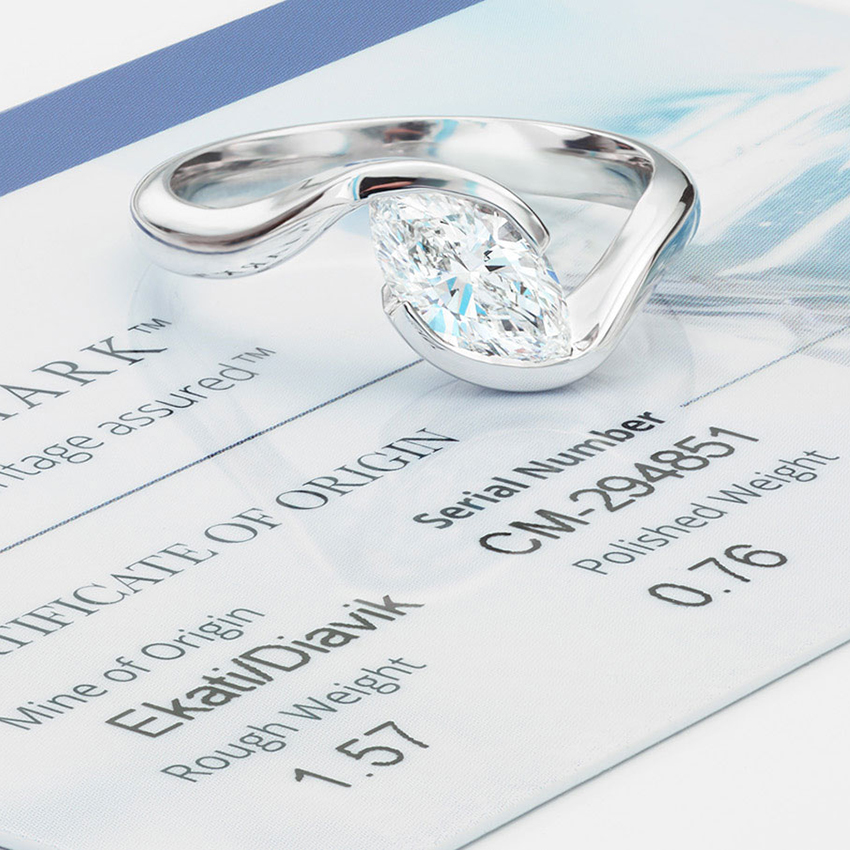
The Ursa engagement ring, crafted with a 100% ethically sourced CanadaMark Marquise diamond. (Finalist in the CanadaMark design awards.)
What are Development Diamonds?
In the Words of the DDI (Diamond Development Initiative)
“The Kimberley Process has helped to consolidate the peace in several African countries, but it is a regulatory system; it is not a tool for development. In the rush to congratulation, there is a danger that some of those who suffered most in the diamond wars – the diggers, and their communities – will be forgotten.
The DDII is an important complement to the Kimberley Process and to its work with alluvial producer countries. We aim, through education, policy dialogue and projects working directly with artisanal diamond miners and their communities, to demonstrate that diamonds can be an asset for growth in countries where they have been at the forefront of conflict and have not reduced poverty; that they can be a catalyst for individual and national development.”
The future of ethically sourced diamonds
For now, sourcing a traceable diamond is a great step for consumers seeking a deeper understanding of where their diamond originated. More and more buyers are demanding conflict-free and more ethical credentials. With greater understanding and support, initiatives like the DDI will help to introduce systems of traceability and support for artisanal miners. The next decade will certainly see many positive changes. Our aim at Serendipity Diamonds is to be a part of this change. We continue our own journey—developing responsibly sourced materials for buyers. More of our clients value ethically sourced jewellery without a negative impact on workers in the supply chain and the surrounding environment.
About Mark Johnson
My name is Mark and I'm founder at Serendipity Diamonds. I have 30 years or experience in polished diamonds and jewellery. Today, I work with an expert team in our Isle of Wight jewellery showroom located in Ryde. Most of my work involves helping clients in our showroom, working on our two websites and photographing jewellery commissions.



